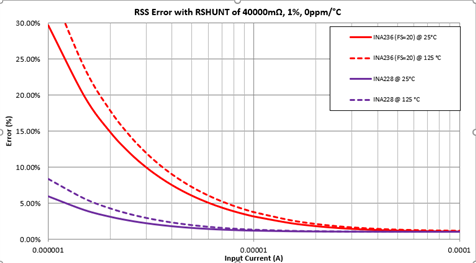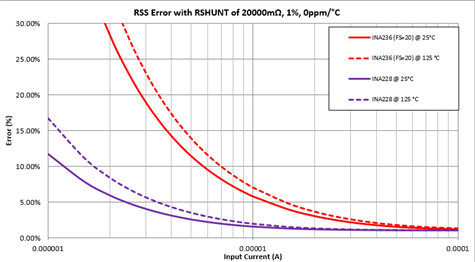Other Parts Discussed in Thread: INA3221, INA236, INA228, INA229
Dear Engineers
I am currently faced with the task of building a current meter that meets specific requirements. Since this current meter is supposed to cover many channels in parallel, I am looking for cheap and simple chips. I came across the INA series, especially the programmable INA219 and the INA3221. The requirements for the chip should be currents in the range of 0.001mA to 1mA. The voltage across the load is about 2-3V and the load has a resistance between 1kOhm and 100kOhm. Is this generally possible with one of these chips, should I adapt a different shunt resistor and/or do I need an additional amplifier?
The whole thing is to be evaluated with a Raspberry Pi.
This is the first time posting to this forum, do you need any more information or sketches. Thank you very much and best regards,
Sebastian




